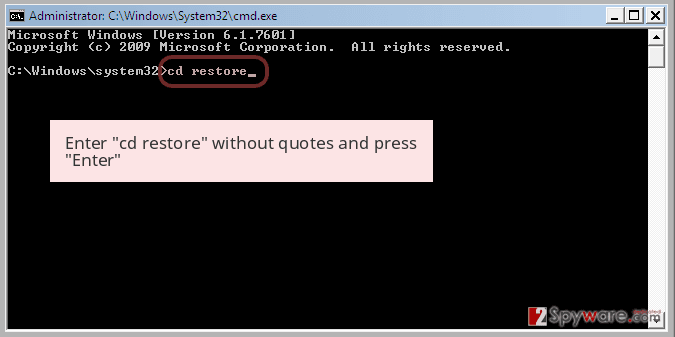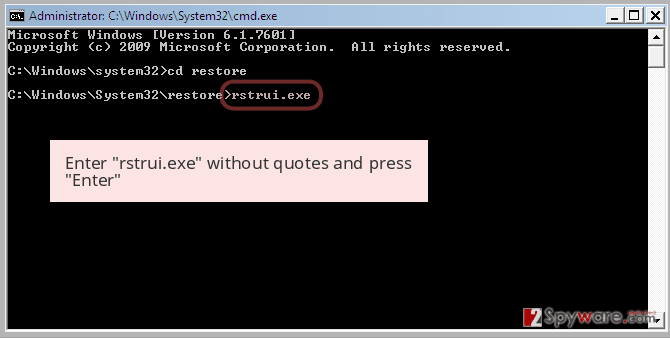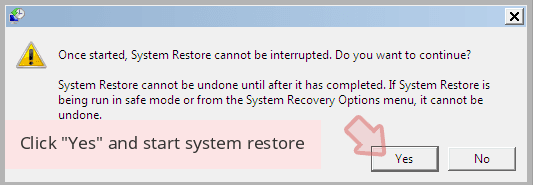CreamPie ransomware (Improved Guide) - Decryption Steps Included
CreamPie virus Removal Guide
What is CreamPie ransomware?
CreamPie ransomware – a file locking virus which appears on the system as a CreamPie.exe process
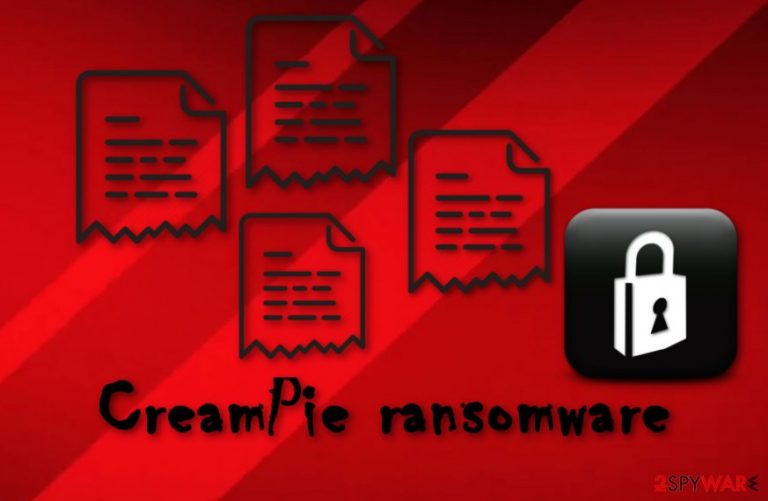
CreamPie ransomware, full name CreamPie v.1.01, is a cyber threat which was discovered on the last week of August this year. This dangerous virus differs from other of its kind because it does not display any ransom note. Crooks provide only the backdata@cock.li email address without any ransom details. This threat encrypts various photos, text files, powerpoint presentations, databases, and other documents. For example, if you had a file named house.jpg. CreamPie virus turns it to house.jpg.[backdata@cock.li].CreamPie.
| Name | CreamPie |
|---|---|
| Type | Ransomware |
| Also known as | CreamPie v.1.01 |
| backdata@cock.li | |
| Extension | [backdata@cock.li].CreamPie |
| Process | CreamPie.exe |
| Enters by | A corrupted DOCX file |
| Distribution | Spam emails |
| Deletion process | Install FortectIntego |
CreamPie ransomware appears as the CreamPie.exe process in the Task Manager[1] section. According to researchers, this ransomware-type virus[2] enters the computer by a corrupted DOCX document. After that, the encryption process starts and takes about half an hour. However, the time duration depends on the amount of data that is located on the infected computer.
Moreover, CreamPie ransomware uses unique encryption codes to lock up important files. Both encryption and decryption keys are stored safely on remote servers and kept in reach only for the cybercrooks. In spite of this fact, even highly-experienced specialists cannot discover the decryption tools required for data recovery.
Even if you are desperate to get files with the .[backdata@cock.li].CreamPie extension back to their previous state, notice that contacting the criminals is not a good idea at all. Victims are often very likely to get scammed and face money losses. If you encounter such infection on your computer, be quick to remove CreamPie ransomware from the system ASAP. For such case, we advise using FortectIntego.
After you perform the CreamPie removal, make sure you store your valuable data safely in the future. A big recommendation would be to use external devices for such case. If you keep important files on a USB drive, you will be able to protect valuable documents from various cyber attacks.
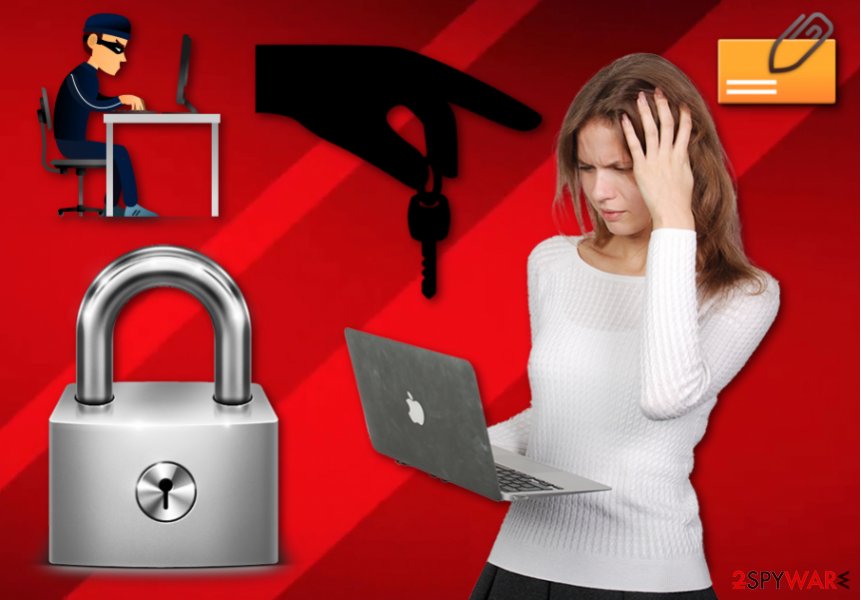
Avoid ransomware attacks
According to malware experts[3], if you want to take some precautionary measures against ransomware-type viruses, you need to gain knowledge about their distribution techniques. The most common ransomware spreading methods are:
- By spam messages. Crooks send thousands of hazardous emails straightly to random victims. Such messages might contain a harmful attachment or link. Once opened, it might launch the installation of a serious malware.
- Third-party sources. E.g., P2P networks. Such pages are provided by secondary sources and might include damaging content. Stay away from third-party websites.
Another big recommendation for you would be to run an antivirus program on your computer. It will allow you to perform regular system scans once in a while and detect various threats. However, you need to make sure that the security tool is always kept up-to-date. Otherwise, it might not function properly.
Make sure you delete CreamPie ransomware permanently
If you want to remove CreamPie virus, you will need to download and install serious security software. We recommend using FortectIntego, SpyHunter 5Combo Cleaner, or Malwarebytes. Expert help is needed in this situation as the cyber threat can cause various damage. However, take notice that manual elimination is not possible for this case as if completed wrong, it might cause even more harm.
After you perform the CreamPie ransomware removal, do some system backups to ensure that all ransomware-related components have vanished successfully. For next time, make sure you take all precautionary measures possible to avoid ransomware and various malware attacks. Additionally, keep your data safe on external devices.
Taking about data recovery, you might have been wondering, how to get important files back to their starter positions. We suggest looking through the following data recovery methods which might be helpful in such a case. Make sure you read the instructions carefully and perform each step as required to gain the best results.
Getting rid of CreamPie virus. Follow these steps
Manual removal using Safe Mode
Reboot your computer to Safe Mode with Networking to disable the ransomware-type virus:
Important! →
Manual removal guide might be too complicated for regular computer users. It requires advanced IT knowledge to be performed correctly (if vital system files are removed or damaged, it might result in full Windows compromise), and it also might take hours to complete. Therefore, we highly advise using the automatic method provided above instead.
Step 1. Access Safe Mode with Networking
Manual malware removal should be best performed in the Safe Mode environment.
Windows 7 / Vista / XP
- Click Start > Shutdown > Restart > OK.
- When your computer becomes active, start pressing F8 button (if that does not work, try F2, F12, Del, etc. – it all depends on your motherboard model) multiple times until you see the Advanced Boot Options window.
- Select Safe Mode with Networking from the list.

Windows 10 / Windows 8
- Right-click on Start button and select Settings.

- Scroll down to pick Update & Security.
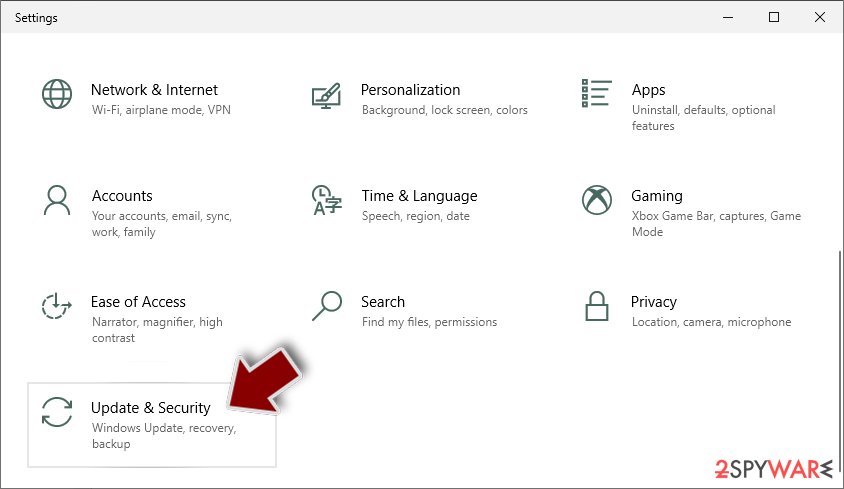
- On the left side of the window, pick Recovery.
- Now scroll down to find Advanced Startup section.
- Click Restart now.
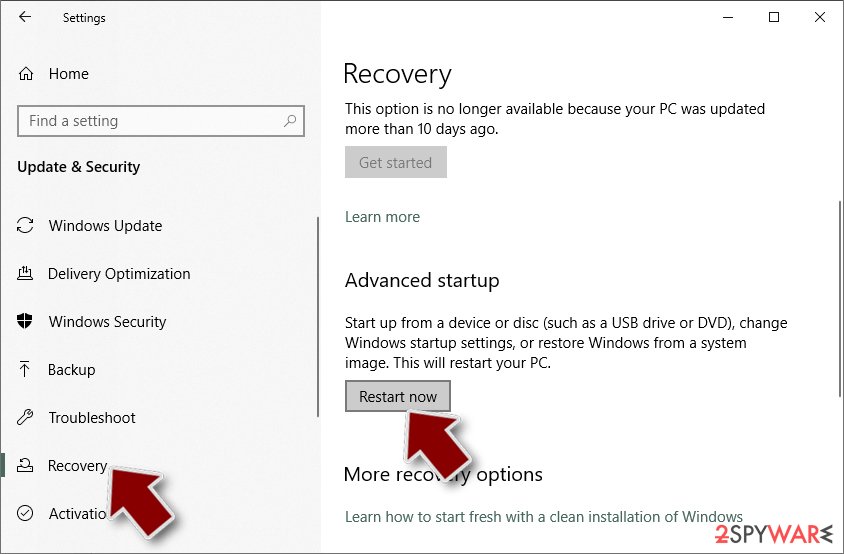
- Select Troubleshoot.
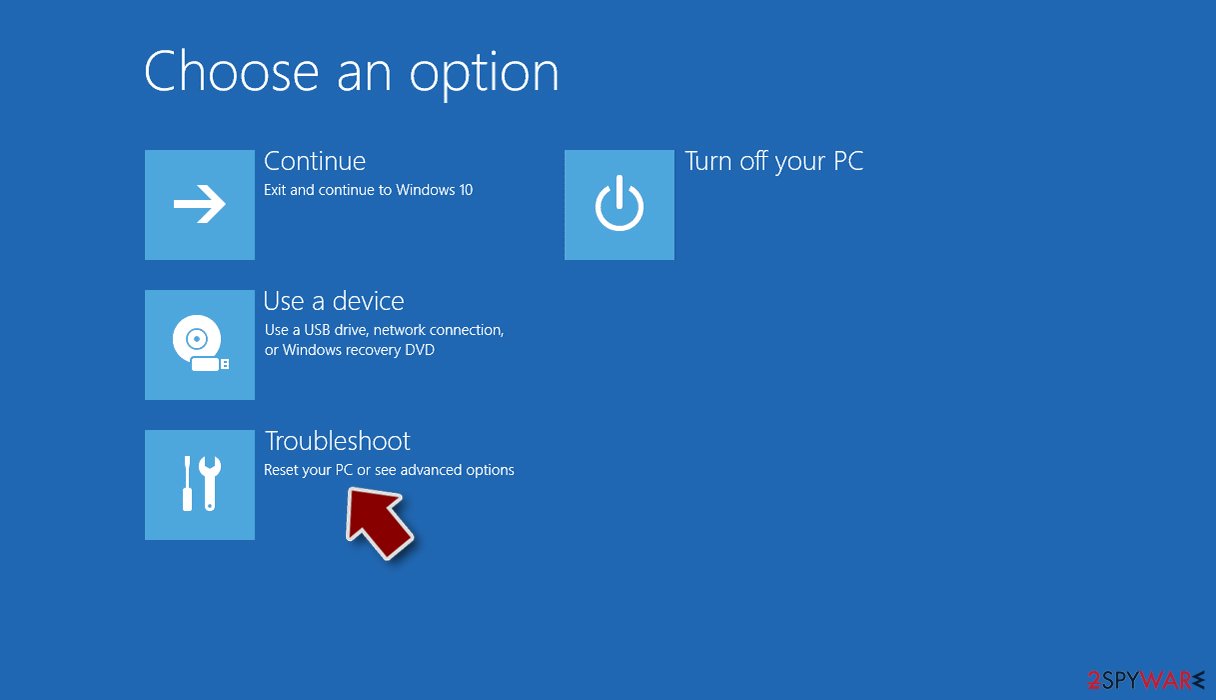
- Go to Advanced options.
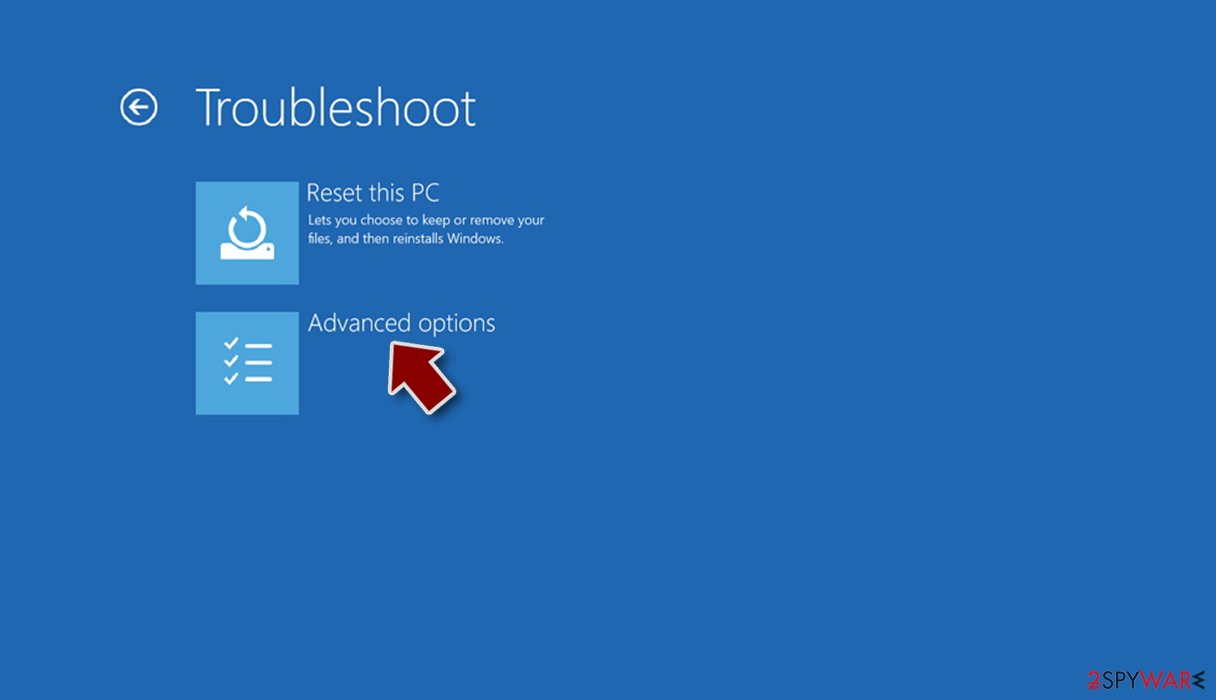
- Select Startup Settings.
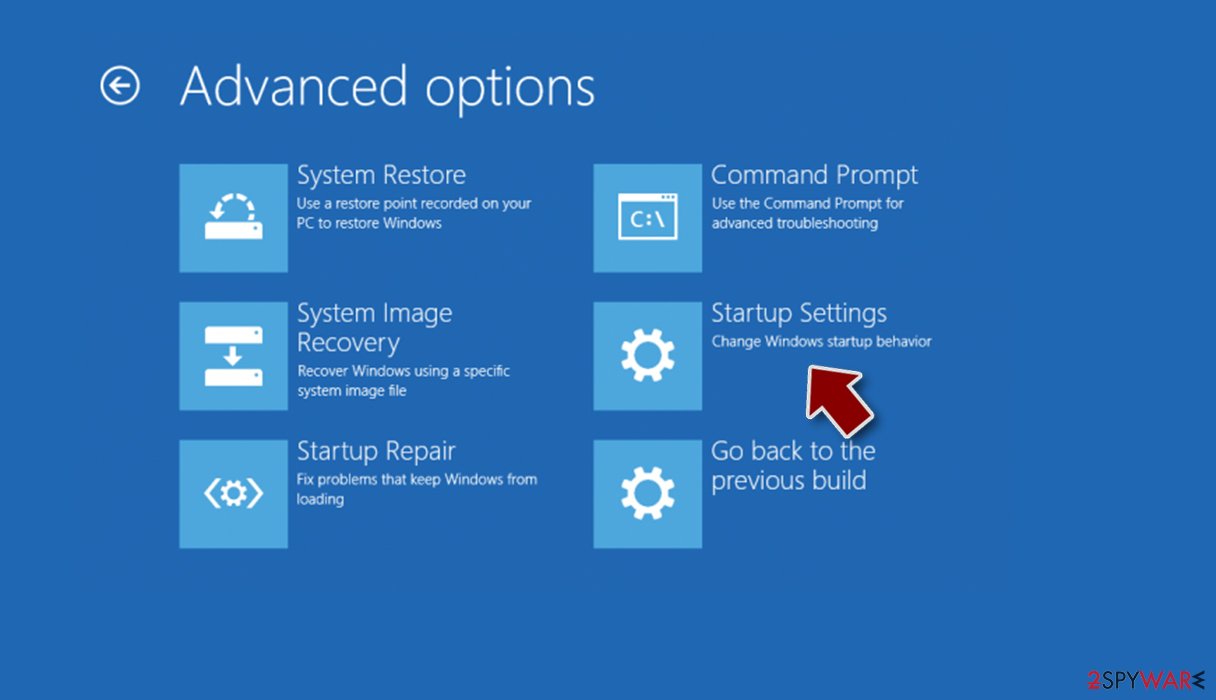
- Press Restart.
- Now press 5 or click 5) Enable Safe Mode with Networking.
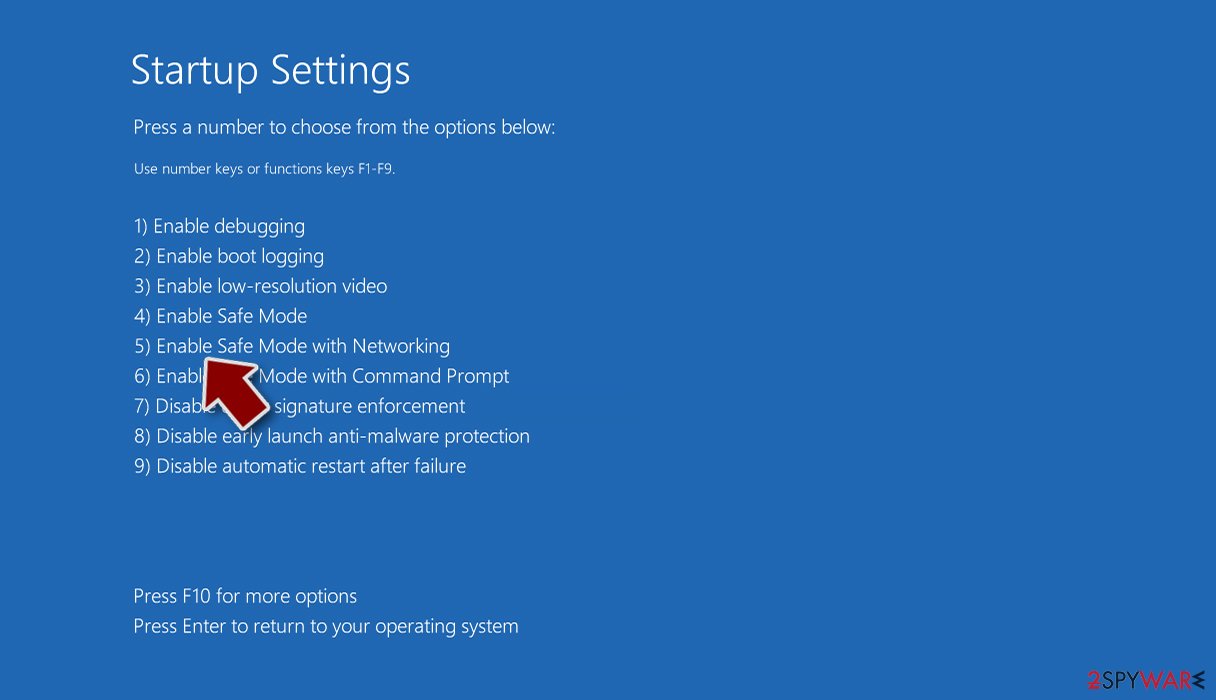
Step 2. Shut down suspicious processes
Windows Task Manager is a useful tool that shows all the processes running in the background. If malware is running a process, you need to shut it down:
- Press Ctrl + Shift + Esc on your keyboard to open Windows Task Manager.
- Click on More details.
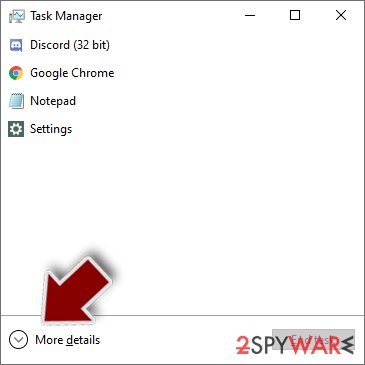
- Scroll down to Background processes section, and look for anything suspicious.
- Right-click and select Open file location.
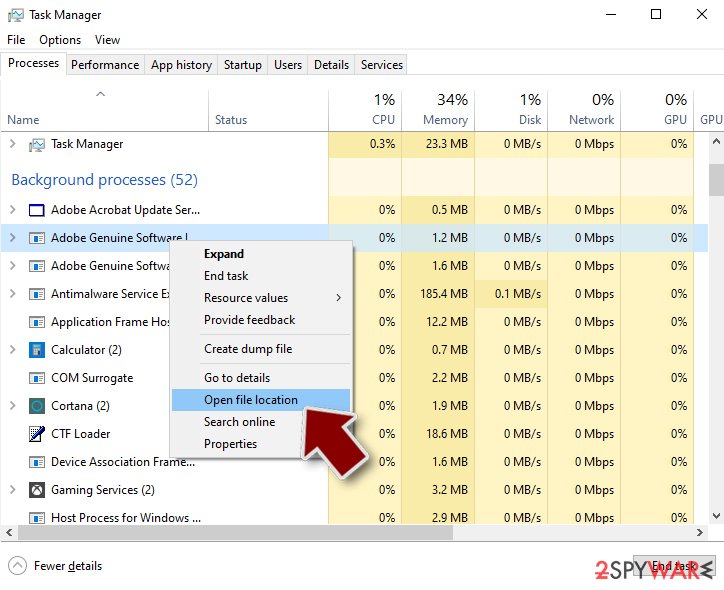
- Go back to the process, right-click and pick End Task.
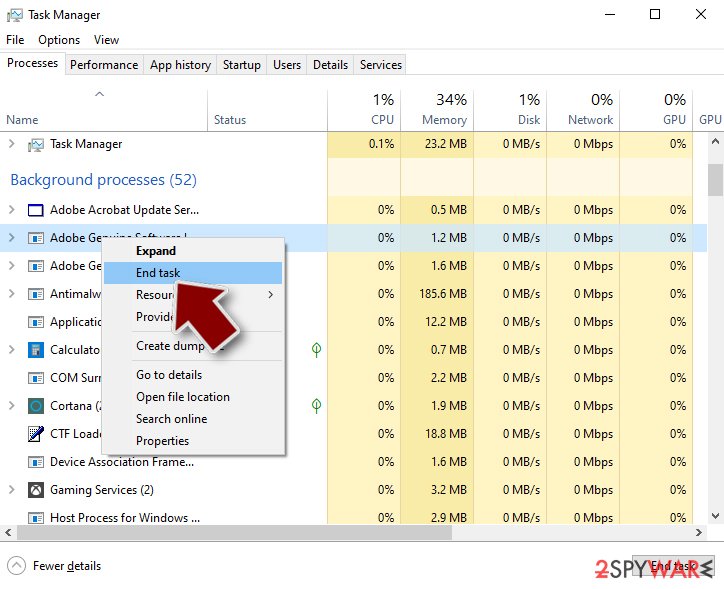
- Delete the contents of the malicious folder.
Step 3. Check program Startup
- Press Ctrl + Shift + Esc on your keyboard to open Windows Task Manager.
- Go to Startup tab.
- Right-click on the suspicious program and pick Disable.
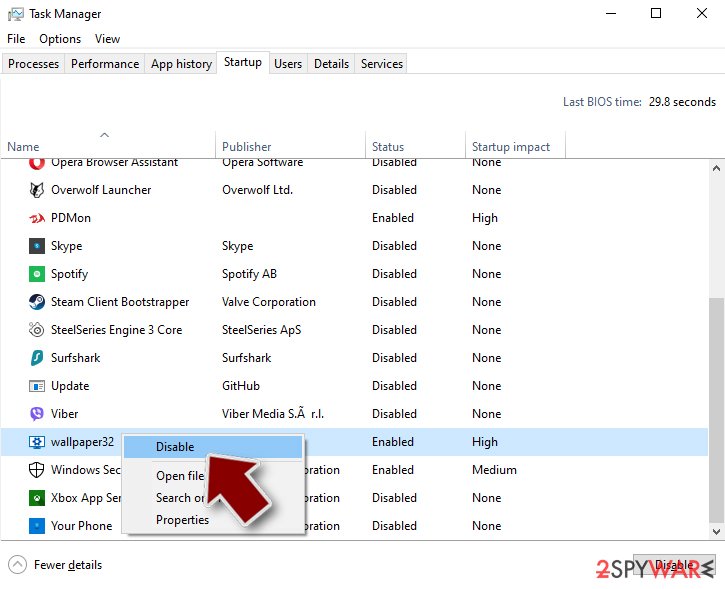
Step 4. Delete virus files
Malware-related files can be found in various places within your computer. Here are instructions that could help you find them:
- Type in Disk Cleanup in Windows search and press Enter.
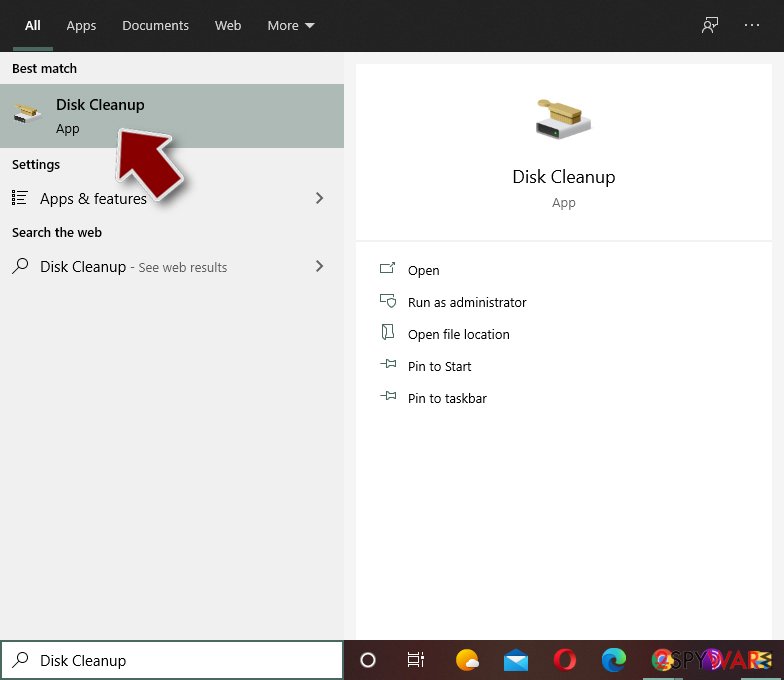
- Select the drive you want to clean (C: is your main drive by default and is likely to be the one that has malicious files in).
- Scroll through the Files to delete list and select the following:
Temporary Internet Files
Downloads
Recycle Bin
Temporary files - Pick Clean up system files.
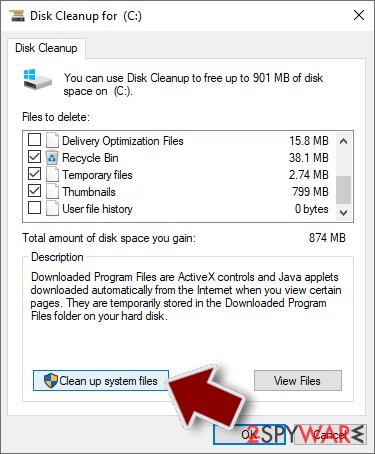
- You can also look for other malicious files hidden in the following folders (type these entries in Windows Search and press Enter):
%AppData%
%LocalAppData%
%ProgramData%
%WinDir%
After you are finished, reboot the PC in normal mode.
Remove CreamPie using System Restore
Activate the System Restore feature. Follow these instructions:
-
Step 1: Reboot your computer to Safe Mode with Command Prompt
Windows 7 / Vista / XP- Click Start → Shutdown → Restart → OK.
- When your computer becomes active, start pressing F8 multiple times until you see the Advanced Boot Options window.
-
Select Command Prompt from the list

Windows 10 / Windows 8- Press the Power button at the Windows login screen. Now press and hold Shift, which is on your keyboard, and click Restart..
- Now select Troubleshoot → Advanced options → Startup Settings and finally press Restart.
-
Once your computer becomes active, select Enable Safe Mode with Command Prompt in Startup Settings window.

-
Step 2: Restore your system files and settings
-
Once the Command Prompt window shows up, enter cd restore and click Enter.

-
Now type rstrui.exe and press Enter again..

-
When a new window shows up, click Next and select your restore point that is prior the infiltration of CreamPie. After doing that, click Next.


-
Now click Yes to start system restore.

-
Once the Command Prompt window shows up, enter cd restore and click Enter.
Bonus: Recover your data
Guide which is presented above is supposed to help you remove CreamPie from your computer. To recover your encrypted files, we recommend using a detailed guide prepared by 2-spyware.com security experts.If you have been wondering, how to restore corrupted data, we have provided some solutions for you. There are few methods below that might be helpful.
If your files are encrypted by CreamPie, you can use several methods to restore them:
Try using Data Recovery Pro to restore important files:
If your data has been corrupted in a certain way, try this method to recover lost files:
- Download Data Recovery Pro;
- Follow the steps of Data Recovery Setup and install the program on your computer;
- Launch it and scan your computer for files encrypted by CreamPie ransomware;
- Restore them.
Use Windows Previous Versions feature and recover locked files:
Sadly, if you did not enable the System Restore feature before the virus installation, there is a big chance that this method might not work properly.
- Find an encrypted file you need to restore and right-click on it;
- Select “Properties” and go to “Previous versions” tab;
- Here, check each of available copies of the file in “Folder versions”. You should select the version you want to recover and click “Restore”.
Shadow Explorer might help you get important data back:
You could give this method a try if the ransomware-type virus did not delete Shadow Copies of affected documents.
- Download Shadow Explorer (http://shadowexplorer.com/);
- Follow a Shadow Explorer Setup Wizard and install this application on your computer;
- Launch the program and go through the drop down menu on the top left corner to select the disk of your encrypted data. Check what folders are there;
- Right-click on the folder you want to restore and select “Export”. You can also select where you want it to be stored.
There is no official CreamPie decryptor discovered yet.
Finally, you should always think about the protection of crypto-ransomwares. In order to protect your computer from CreamPie and other ransomwares, use a reputable anti-spyware, such as FortectIntego, SpyHunter 5Combo Cleaner or Malwarebytes
How to prevent from getting ransomware
Do not let government spy on you
The government has many issues in regards to tracking users' data and spying on citizens, so you should take this into consideration and learn more about shady information gathering practices. Avoid any unwanted government tracking or spying by going totally anonymous on the internet.
You can choose a different location when you go online and access any material you want without particular content restrictions. You can easily enjoy internet connection without any risks of being hacked by using Private Internet Access VPN.
Control the information that can be accessed by government any other unwanted party and surf online without being spied on. Even if you are not involved in illegal activities or trust your selection of services, platforms, be suspicious for your own security and take precautionary measures by using the VPN service.
Backup files for the later use, in case of the malware attack
Computer users can suffer from data losses due to cyber infections or their own faulty doings. Ransomware can encrypt and hold files hostage, while unforeseen power cuts might cause a loss of important documents. If you have proper up-to-date backups, you can easily recover after such an incident and get back to work. It is also equally important to update backups on a regular basis so that the newest information remains intact – you can set this process to be performed automatically.
When you have the previous version of every important document or project you can avoid frustration and breakdowns. It comes in handy when malware strikes out of nowhere. Use Data Recovery Pro for the data restoration process.
- ^ What is Task Manager. Kaspersky Lab. IT info.
- ^ Ransomware. Wikipedia. the free encyclopedia.
- ^ DieViren.de. DieViren.de. Malware researches and professional tech tips.


